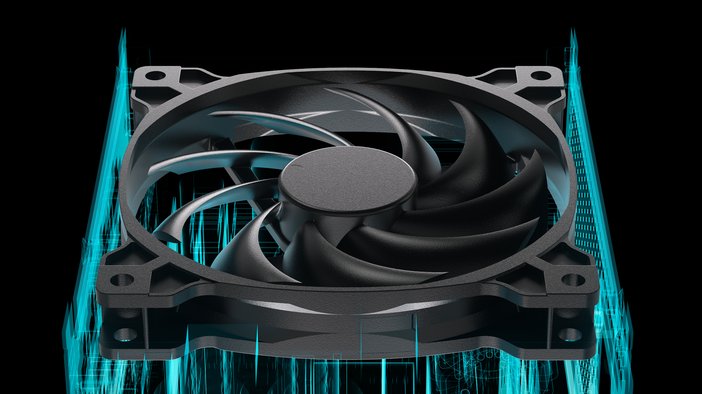When gaming, it’s essential to monitor your CPU temperature to keep your system running smoothly. The normal CPU temperature while gaming typically ranges between 60°C and 85°C, depending on various factors like game intensity, cooling setup, and ambient temperature. Maintaining these optimal ranges can help prolong the life of your CPU and prevent performance throttling.
Understanding what a normal CPU temperature while gaming looks like can help you identify potential issues before they become significant. Here, we’ll explore the factors that impact CPU temperatures, ways to measure them, and effective methods to keep your processor cool during intense gaming sessions.
What Is a Normal CPU Temperature While Gaming?
A CPU’s temperature varies based on workload, and gaming is often one of the most demanding activities for your system. Generally, the normal CPU temperature while gaming should be between:
- 60°C to 70°C: Optimal range for most CPUs during gaming.
- 70°C to 85°C: Acceptable for high-performance gaming, but should be monitored closely.
Keeping your CPU temperature within this range is crucial for maintaining optimal performance. Anything above 85°C can lead to thermal throttling, reducing the CPU’s efficiency and possibly affecting your gaming experience.
Factors Affecting CPU Temperature During Gaming
Several factors influence CPU temperature while gaming, and understanding these can help you maintain an optimal range. One major factor is the type of cooling system you have installed. Air coolers, liquid coolers, and custom water-cooling loops all have different cooling capabilities, which affect how well they can manage temperature.
Another significant factor is ambient room temperature. If your gaming setup is in a room that gets hot, your CPU will also run hotter. Consider these additional variables that affect temperature:
- Game Type: Resource-intensive games put more strain on your CPU.
- Background Processes: Additional software running simultaneously can lead to higher temperatures.
How to Monitor Your CPU Temperature
To keep your gaming system in check, it’s essential to monitor your CPU temperature regularly. There are several tools available that can provide real-time data on your CPU’s temperature. HWMonitor, Core Temp, and NZXT CAM are popular options that can be easily downloaded and used to track thermal performance.
Most modern motherboards also offer built-in monitoring software that provides a detailed overview of your CPU’s temperature. Utilizing these tools allows you to know when temperatures are approaching unsafe levels, enabling you to take proactive steps.
Signs of Overheating and Their Impact
An overheating CPU can significantly affect gaming performance. One of the first signs of an overheating CPU is a noticeable reduction in frame rates. Games may start to stutter or lag, indicating that the CPU is throttling to cool itself down.
In more severe cases, your system may crash or automatically shut down to prevent damage to components. Overheating can also lead to long-term consequences, including reduced lifespan of your CPU and other components. If you experience these symptoms often, it’s a sign that your cooling solution may need an upgrade or that additional steps are necessary to regulate heat.
Techniques for Maintaining Normal CPU Temperatures
There are several ways to maintain normal CPU temperatures while gaming. Implementing these strategies can help you avoid thermal throttling and enhance your overall gaming experience.
First and foremost, ensure that you have adequate cooling for your CPU. Upgrading from a stock cooler to a more powerful aftermarket cooler, such as a tower air cooler or a liquid AIO cooler, can make a significant difference. It’s also important to keep your cooling solution clean; dust can accumulate in fans and radiators, reducing their efficiency.
Another effective technique is improving airflow within your computer case. Make sure the intake and exhaust fans are configured correctly to allow proper circulation of air. Adjusting the placement of fans or adding additional ones can help reduce internal temperatures and assist in keeping your CPU cooler.
Choosing the Right Thermal Paste
Thermal paste plays an essential role in transferring heat from your CPU to the cooler. Over time, thermal paste can dry out, reducing its efficiency. If your CPU is running hot despite having a good cooler, it might be time to replace the thermal paste.
When choosing thermal paste, there are a variety of options available, from basic silicone-based pastes to more advanced liquid metal compounds. The latter offers better heat conductivity but can be more challenging to apply. Make sure to reapply thermal paste every few years or whenever you change coolers to keep your CPU performing optimally.
Importance of Proper Cable Management
Good cable management is not just for aesthetic purposes; it also plays a significant role in maintaining lower CPU temperatures. Poorly organized cables can obstruct airflow inside the case, leading to higher temperatures.
Tidy up cables using cable ties or cable routing channels to ensure that air can flow freely throughout the case. Proper cable management makes it easier for intake and exhaust fans to do their job, keeping the entire system cooler, including the CPU.
Impact of Undervolting on CPU Temperature
Undervolting is an advanced technique that can be used to reduce CPU temperatures without affecting gaming performance. By decreasing the voltage supplied to the CPU, you can minimize heat generation. This requires some technical knowledge and patience, as lowering the voltage too much can result in instability.
Software tools like Intel’s XTU or AMD’s Ryzen Master can help you safely undervolt your CPU. If done correctly, undervolting can lead to a reduction in temperature while allowing your CPU to perform at the same level, providing a stable gaming experience without excessive heat.
The Role of Room Temperature and Placement
The environment in which your computer operates can also have a considerable impact on CPU temperature. Gaming in a room without adequate ventilation or in an area that gets very hot during the day can cause CPU temperatures to rise. Try to keep your gaming rig in a cool, well-ventilated area.
Additionally, consider placing your system on a hard, flat surface. Placing a computer on a soft surface, like a carpet, can restrict airflow, especially for bottom-mounted fans. Maintaining a moderate room temperature and ensuring that your computer has access to sufficient airflow can go a long way in keeping temperatures within the normal range.
Conclusion
Monitoring and maintaining a normal CPU temperature while gaming is crucial for the longevity and performance of your computer. Keeping your CPU between 60°C and 85°C is the ideal range to prevent overheating, throttling, or damage. Using the right cooling solutions, improving airflow, and employing techniques like undervolting can help you manage CPU temperatures effectively.
Taking these preventive measures not only ensures a smoother gaming experience but also extends the life of your CPU and other components. By staying vigilant and proactive about your CPU’s temperature, you can keep gaming without worrying about overheating or sudden shutdowns.




